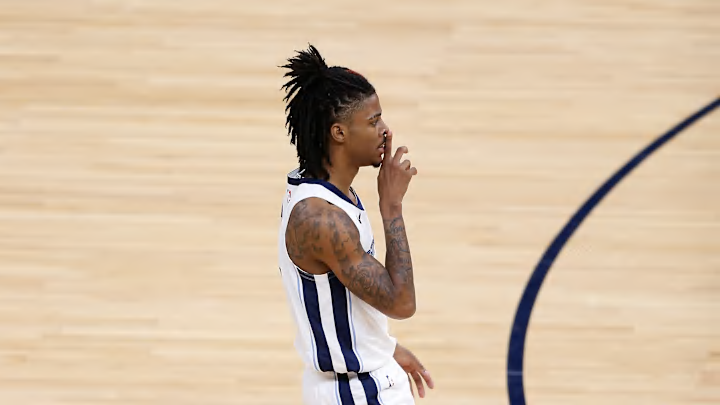Even though the NBA's regular-season (is too long; or) has been largely viewed as an unnecessarily long marathon for quite some time now, NBA Commissioner, Adam Silver, went out of his way to lengthen it by adding the play-in tourney a few years back.
Before the Orlando Magic suffered its 16th loss of the 2023-‘24 regular-season to Karl-Anthony Towns (28 PTS), Rudy Gobert (21 PTS , 12 RBS) and the duo’s Minnesota Timberwolves on January 9th, former NCAA Basketball stars. Franz Wagner, Paolo Banchero and the pair’s teammates represented one of five teams in the Eastern Conference with the same record; 21-15. At the 36-game mark, nearly 44 percent of the regular season’s over, and it’s remarkable how one-third of the East or the East’s fourth thru eighth-seeded teams could say they had identical records.
Of the East’s (current-) top non-playoff teams, the Bulls (17-21) and the Nets (16-21) were atop these standings as the ninth & tenth seed; respectively. While it’s virtually inevitable that some degree of separation between the five knotted-up teams takes hold over the remainder of the regular season, the existing five and five & a half game differences between the 8/9 & 8/10 teams might hang around as the season wears on. If a team owns a 21-15 record, that also means they win about 58 percent of their games; and if we apply that value to the 82-game season we’re left with between 47 and 48 wins. As far as the win-percentage of the 17-21 Bulls is concerned, theirs is a shade below 45 (-percent) and if they kept that up they’d walk away with approximately 36 or 37 wins.
I don’t know about you, but being a(-n) seven/eight - seed at 12/14 games above - .500 sounds a heck of a lot better than a sub-par squad that’s 8/10 games below - .500. In other words, a 47-win team should NEVER be in a position where they could lose their playoff spot to a 37-win team (-at season’s end). Currently, the above scenario is plausible; whereas the first annual Play-In Tournament prohibited such circumstances.
Although the Play-In Tournament’s inception was just a few years ago (in 2019-‘20) , that version was different than today’s; and the original tournament only included each conference’s eight and nine seeds; provided that these two teams were separated by no more than four games at season’s end. The inaugural Play-In Tournament also happened to coincide with the NBA’s 22-team Bubble summer; and the tournament itself was comprised of just one-game due to the fact that the eighth-seeded Magic had a 7.5 game lead over the ninth-seeded Wizards and that the eighth-seeded Blazers defeated the ninth-seeded (challengers in the) Grizzlies.
Ahead of the 2020-‘21 regular-season, the play-in tournament’s format was changed to ensure (that) 4-teams from both conferences (8 total) would be included in its proceedings every year; instead of keeping it at 2-teams from both conferences (4-total) along with the four-game contingency in-place for each conference.Watching the Wolves’ feisty defender (in) Pat Beverley, the Grizzlies’ sprouting all-star Ja Morant, and the Pelicans’ Brown-&-White grad CJ McCollum (each) leave it all on the floor during the play-in was a blessing, not to mention a large chunk of the association’s play-in games have been brilliant.
Thrust into an environment where your season’s on-the-line or one-game from being on-the-line (depending on the game & your team’s position) , the play-in’s level of competition is inherently second to none; and its single/double - elimination styled format lends itself to the pressure cauldron that’s abundantly evident in each game. That said, we mustn’t overlook the Play-In Tournament’s impact on the rest of the season.
After Adam Silver swiftly decided to double down on the Play-In’s yearly inclusion in the NBA’s annual calendar by expanding it and removing its 4-game contingency-rule, he effectively diluted the importance of the 82-game regular season. He opened the proverbial playoff door to the league’s inferior teams.Just last year, the Eastern Conference Champions (via the 44-38 Heat) made the playoffs by the skin of their teeth after overcoming a one-point deficit thru three-quarters to rally past the 40-42 Bulls in the second (/final) play-in game.
While the 2022-‘23 Heat earned themselves (just) a 4-game advantage over the Bulls thru 82 games; meaning the 1-year 4-game contingency-rule wouldn’t have prevented them from playing (even) if it had been in existence, Miami was extremely close to losing their playoff-spot to Chicago despite being the superior team by a mile.Had the DeMar DeRozan & Zach LaVine-led Chicago Bulls defeated Jimmy Butler, Max Strus & their Miami Heat in the pairs’ do-or-die play-in matchup, it’s safe to say (that) Giannis, Middleton, and Holiday’s top-seeded Milwaukee Bucks would’ve made quick work of the unproven Chicagoans in their seven-game series. In fact, it’s hard imagining the Bulls earning themselves a Game 6 (let alone a Game 7) against the superior Bucks.
While you could say such an outcome was thankfully avoided by the simple fact that Miami proved they were the better team in their play-in game against Chicago, we all know how easy it is to lose one game (or two-consecutive) in the NBA; and it’s certainly not absurd to expect one of these bad 9-or-10 seeded play-in teams to play their way into the playoffs after (a pair of wins that includes) beating a team that should already be in the playoffs.
If the NBA’s top dog, Adam Silver, decides not to reincarnate the play-in’s 4-game contingency-rule; which is what will happen, I and (the) others who happen to give a damn about (upholding) the quality of the game are going to continue to ask questions about the NBA’s motives.
Unfortunately, all we’ll really be doing is asking questions we already know the answers to.
